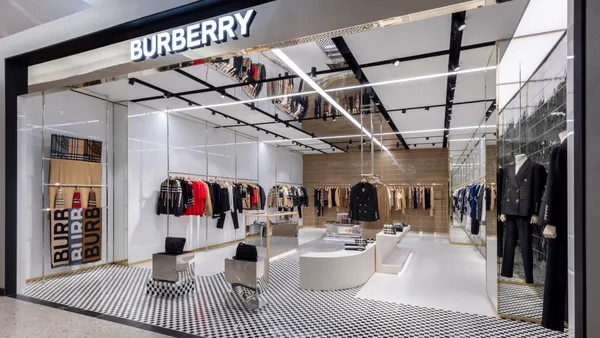Dive Brief:
- An e-commerce order fulfillment model created by Celect for Urban Outfitters reduced lost sales and shipping cost by optimizing where orders would be shipped from, according to a paper published earlier this year by Celect in the Informas Journal on Applied Analytics.
- The model reduced lost sales by 37% and shipping cost by 7% compared to a baseline model. The experiment included 129 styles, 134 possible fulfillment locations and total order demand of 117,781 units, according to the paper. Lost sales are the result of using store inventory to fulfill an online order resulting in a stockout and the inability to make a sale of that item in-store.
- This decrease in lost sales coincided with a decrease in shipping cost, which fell more than 12% when the new model was used on experimental data.

Dive Insight:
Figuring out the best way to handle fulfillment for online orders is a matter of margins, Vivek Farias, the co-founder and CTO of Celect said during a presentation of the research last year. Farias highlighted recent earnings figures from Walmart that showed double-digit growth in e-commerce sales.
"While this double-digit growth is great, the margin on this double-digit growth is tremendously painful," Farias said.
The lower margins associated with e-commerce orders are the result of higher fulfillment costs. One way to address this is with better inventory management, he said.
Retailers use safety stock — buying above expected demand — to help prevent lost sales, but it can also result in unsold inventory. This unsold inventory is then, traditionally, either marked down or moved into a different channel.
But this inventory could also play a role in helping retailers fulfill online orders, allowing the retailer to serve more channels with less inventory and thus decreasing the cost of goods sold. The key is choosing the right store location for fulfillment. The wrong location can result in either lost sales as a result of running out of inventory or increased shipping cost.
Before using the Celect algorithm, Urban Outfitters was using IBM's Sterling Commerce tool which picked fulfillment locations based on the shipping cost. If multiple locations were equal on cost it also considered inventory levels and tried to ship multiple items from the same store.
"On the one hand, the goal of minimizing shipping cost may lead the retailer to consider shipping from the store nearest to the customer," the researchers explain in their paper. "On the other hand, imagine that this nearest store is seeing high in-store sales of the same product, so that assignment to that store risks cannibalizing a future in-store sale. In the event that there exists an alternative location where inventory is plentiful relative to demand, an assignment to that alternate location might be preferred."
Celect's algorithm seeks to avoid lost sales by considering the rolling average of demand at every location when making a decision — an idea a lot of companies are currently thinking about. Both Celect and IBM filed patents last year, published for the first time recently, which deal with optimizing order fulfillment from multiple locations.
Retailers are likely to maintain this focus, especially as more of them turn to their store network for online order fulfillment. Target has been a major proponent of this model, crediting store fulfillment with a 40% reduction in cost. The retailer also announced it is doubling its seasonal hiring this peak season to ensure the system runs smoothly through the holidays.
Getting it right will be about more than getting packages delivered on time — getting the margins math to work is also important. Urban Outfitters has been using the Celect system since mid-2017 and processes an average of 18,000 orders per day.
"The fulfillment-optimization problem is not unique to Urban Outfitters: It is a practical consideration for any retailer with a nontrivial e-commerce business and a store network," the paper concludes. "Indeed, Celect has subsequently implemented the approach described here at multiple retailers to similar effect."
This story was first published in our weekly newsletter, Supply Chain Dive: Operations. Sign up here.














